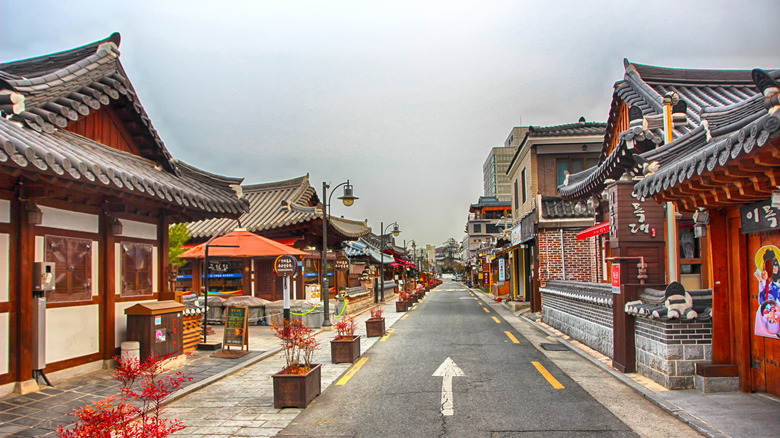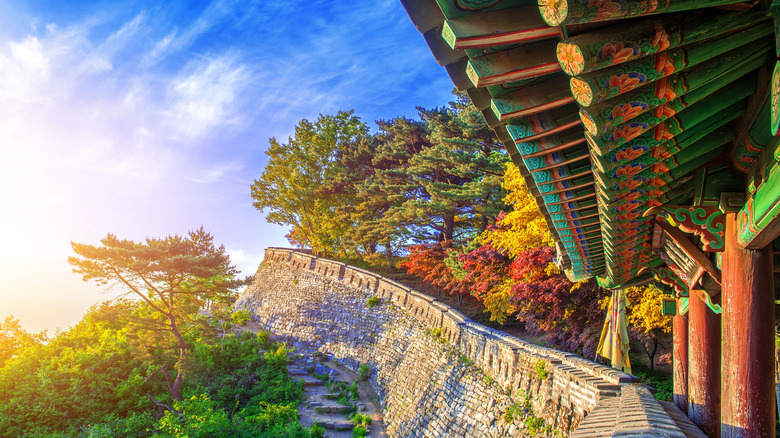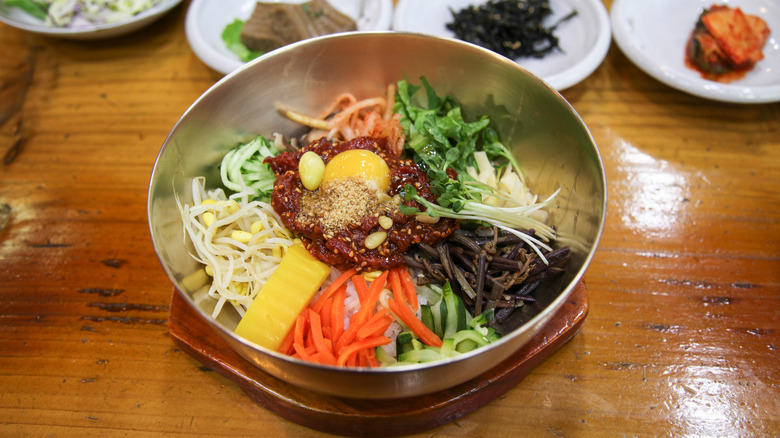This Wildly Underrated Slice Of South Korea Is A Gorgeous Vacation Destination Void Of Any Tourist Crowds
South Korea's Seoul is the go-to destination of culture, art, and music for many first-time travelers to the country. But outside the capital, there are more wonders to be discovered. Step away from the bustle of tourist crowds and go off the beaten path in South Korea's southwest region. Traveling to these smaller cities means more laid-back activities, deeper immersion in the local culture, and fewer tourist traps.
So, what's there to do in the southwest? The top spots are centered more on history and local culture of the southern provinces. Areas like the Jeolla-do provinces — North and South Jeolla — along with Gwangju, and even Jeju Island, are front and center on where to go in the south. Some notable destinations include Jeonju Hanok Village and Buddhist temples such as Jeungsimsa Temple in Gwangju. There are also lots of food tours that will satisfy your cravings, whether it's trying a traditional hanjeongsik (full-course Korean meal) or experiencing a tea ceremony.
Fly into Incheon International Airport, the most comfortable airport in the world, and travel about 4 hours via bus from Seoul to Jeonju. Start the journey in Jeonju to explore the Hanok Village or even stay in a traditional hanok home. Then head south to Suncheon and Jirisan National Park for a nature escape, and on to Gwangju for history and culture. If you've got more time, consider adding other destinations like Boseong and Yeosu to your southwestern experience.
Immerse yourself in history, culture, and nature in South Korea's southwest region
A trip to South Korea's southwest region wouldn't be complete without a stop in Jeonju located in North Jeolla. As a former capital, there are so many stories embedded in the walls of this city. It's most known for Jeonju Hanok Village, the largest traditional hanok village in the country, preserving historical Korean houses. With over 700 hanok houses, a simple walk through the town is worthwhile. There are many guided tours available, but if you're exploring on your own, try the stamp tour, which leads you to key sites around the area. You can learn about each spot, collect stamps, and explore at your own pace.
Suncheon, on the other hand, is a haven for nature enthusiasts. As a smaller city, the atmosphere is peaceful and tranquil. It's also home to Jirisan National Park, where you can find Jirisan Mountain, said to be one of the three holiest mountains in Korea. The park also features temple complexes, including the Seonamsa Temple, a UNESCO World Heritage Site.
For more history and culture, visit Gwangju. The city is best known for its part in upholding democracy in Korea, most especially the May 18 Democratic Uprising, which is memorialized in several areas of the city. Mudeungsan National Park is another great spot for nature, and Namhansanseong Fortress, a UNESCO World Heritage Site, also offers loads of nature and historical activities. Gwangju is a hub for art and culture, with museums like Uijae Museum of Korean Art, Gwangju Museum of Art, and Gwangju Folk Museum.
Things to know before your trip to South Korea's southwest region
Although the southwest sees fewer tourists, it's still best to plan the timing of your visit. You can expect good weather during spring, from April to June, and in the fall, from September to November. Jeju, one of South Korea's most beautiful island vacations, has been gaining popularity in recent years and can get crowded, but it's a great addition to your trip. Some festivals in the southwest to watch out for include the Jeju Canola Flower Festival , the Boseong Green Tea Festival, and the Gwangju Kimchi Festival.
If your vibe is more about the delicious South Korean cuisine, don't miss out on some of the southwest region's foodie adventures. Bibimbap, a beloved Korean dish, originated in Jeonju, so be sure to try some while you're in the city. Boseong is also a great stop if you're a tea lover, as it's all about green tea and boasts vast tea fields.
There are many guided road trips to the southwest Jeolla-do Province, so transportation may not be an issue. But if you're going on your own, renting a car is an option. Be sure to download Kakao Map, which works better than Google Maps in South Korea. Public transportation is also convenient, with trains connecting major cities, and buses serving smaller towns. Also, take note that tipping is not recommended, as South Korea is one of the many countries where gratuities aren't expected.


